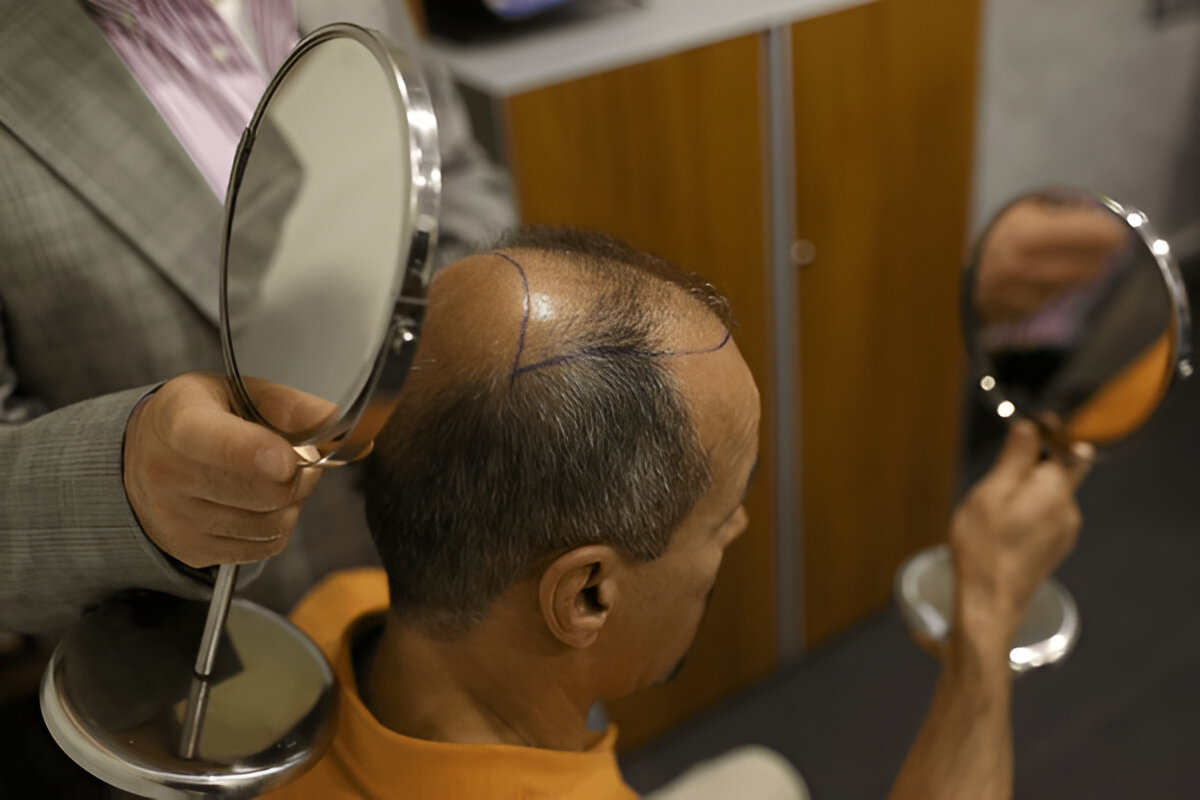If you are considering a hair transplant in the UK, it’s natural to want to know exactly what happens during the procedure. Hair transplants are a popular solution for hair loss, and many clinics in London offer advanced treatments to restore natural-looking hair. The procedure can seem intimidating, but understanding the steps can help you feel more confident and prepared. In this article, we’ll walk you through the entire hair transplant process in the UK, from the initial consultation to the final results.
Step 1: The Initial Consultation
The journey to a successful hair transplant in London begins with an in-depth consultation. You’ll meet with a surgeon to assess your hair loss and discuss your goals during this meeting. The consultation is crucial because it allows the surgeon to determine if you are a good candidate for a hair transplant.
The surgeon will review your medical history, hair loss pattern, and expectations. They will also examine your scalp to assess the quality and availability, typically taken from the back or sides of the head. This is an essential step in determining the best approach for your hair transplant. The surgeon may also explain the techniques available, such as FUE (Follicular Unit Extraction) or FUT (Follicular Unit Transplantation), to help you make an informed decision.
During the consultation, you will also get an estimate of the hair transplant cost UK. Be sure to ask about the full breakdown of the costs, including any follow-up treatments or post-operative care.
Step 2: Preparing for the Procedure
The next step is preparation once you’ve decided to go ahead with the hair transplant. On the day of the procedure, the clinic will provide specific instructions to help ensure the best results. You’ll be advised to avoid alcohol, certain medications, and smoking, as these can interfere with the healing process.
The area of the scalp where the transplant will occur will be cleaned thoroughly, and the donor area will also be prepared. If you’re undergoing FUE, this involves trimming the hair in the donor area to allow for precise follicle extraction. For FUT, the surgeon will mark the location from which the strip of hair will be taken.
Step 3: Administering Local Anesthesia
A hair transplant is a minimally invasive procedure performed under local anesthesia. This means you will be awake and aware during the surgery, but the area being worked on will be numb. The surgeon will inject local anesthesia into the scalp to ensure that you feel no pain during the procedure.
Although you’ll be awake, many patients report feeling relaxed during the process. Some clinics even offer sedation to make you feel more comfortable. Using local anesthesia means you won’t need general anesthesia, reducing risks and shortening recovery time.
Step 4: Extraction of Hair Follicles
The next step depends on which method is being used. If you undergo FUE, the surgeon will use a tiny, specialized tool to extract hair follicles from the donor area. These follicles are removed individually and placed in a storage solution to keep them viable for transplantation. FUE is known for its precision and minimal scarring, making it a popular choice among patients.
In the case of FUT, the surgeon will remove a thin strip of skin from the donor area, usually at the back of the head. This strip is then divided into individual follicular units under a microscope. FUT tends to be used when a larger number of grafts are needed, and while it leaves a linear scar, it can often provide a higher yield of follicles in a single session.
Both methods require skill and experience to ensure that the hair follicles are extracted with minimal damage and that they take root once transplanted.
Step 5: Implantation of Hair Follicles
After the hair follicles have been prepared, the next step is implantation. This is where the hair transplant truly begins to take shape. The surgeon will make tiny incisions in the recipient area where the follicles will be placed. The key to a successful hair transplant in London is ensuring the follicles are implanted at the correct angle and density. This creates a natural, realistic hairline.
With FUE, the surgeon uses a small tool to create tiny incisions for each follicle, carefully placing them to mimic the natural growth pattern of your hair. For FUT, the follicles are manually placed into the incisions made by the surgeon.
During the implantation process, the surgeon takes their time to ensure that each follicle is placed precisely, as this will affect the outcome of your hair transplant.
Step 6: The Recovery Process
After the hair transplant procedure, you will be monitored for a short period to ensure you are recovering well. Most patients can return home the same day. However, it’s essential to follow the post-operative care instructions provided by your surgeon.
Immediately after the procedure, you may experience swelling, redness, and discomfort in the donor and recipient areas. These symptoms typically subside within a few days. Your surgeon will likely prescribe medications to help manage pain and prevent infection.
During the first few weeks, you’ll also be advised to avoid activities that could strain the scalp, such as heavy exercise or direct sunlight. Most patients return to work within a week, though you should avoid strenuous activities for about a month to allow your scalp to heal fully.
Step 7: Monitoring Progress and Results
Over the next few months, you’ll notice shedding of the transplanted hair. This is normal and part of the process. The transplanted hair enters a resting phase and will begin to regrow around 3 to 6 months after the procedure.
By the end of the first year, you should begin to see significant improvements, with the transplanted hair thickening and growing naturally. Full results are typically visible within 12 to 18 months.
Regular follow-up appointments are essential to monitor your progress and ensure your transplanted hair grows as expected. Your surgeon will assess the results and may offer additional treatments, such as PRP therapy, to further promote hair growth.
What Sets the Best Hair Transplant UK Clinics Apart?
The best hair transplant UK clinics are known for their experienced surgeons, state-of-the-art technology, and personalized care. They offer tailored treatment plans to ensure your hair transplant is customized to your needs. A reputable clinic will also provide comprehensive aftercare to help you achieve the best possible results.
When selecting a clinic, look for a proven track record of successful procedures, positive patient reviews, and transparent pricing. While hair transplant cost UK can vary, it’s important to remember that the quality of the procedure should always be your top priority. Opting for the best hair transplant London clinic will ensure your results are natural-looking and long-lasting.
Conclusion
Understanding the steps involved in a hair transplant procedure in the UK can help alleviate any concerns. From the initial consultation to the final results, the process is straightforward and designed to provide lasting, natural-looking hair. Whether you choose FUE or FUT, the hair transplant can transform your appearance and restore your confidence. You can enjoy beautiful, full hair for many years with the right clinic and proper care.
Also read: Top 5 Tips for Choosing a Dentist Near You in Des Plaines




